- Achimenes: How to Care for These Beautiful Plants
- Choosing the Right Location for Your Achimenes Plants
- 1. Light Requirements
- 2. Temperature
- 3. Humidity
- 4. Air Circulation
- 5. Potting Mix and Drainage
- 6. Indoor vs. Outdoor Placement
- Achimenes Watering: Finding the Perfect Balance
- 1. Understanding Achimenes Watering Needs
- 2. Watering Frequency
- 3. Watering Techniques
- 4. Adjusting Watering in Different Seasons
- Achimenes Soil: A Key Element for Thriving Plants
- Achimenes Fertilizing: Nourishing Your Plants
- 1. Choose the Right Fertilizer
- 2. Apply Fertilizer Regularly
- 3. Water Before Fertilizing
- 4. Avoid Over-Fertilizing
- 5. Consider Using Organic Fertilizers
- 6. Monitor Plant Response
- Propagating Achimenes: Sharing the Beauty
- 1. Propagating from Rhizomes
- 2. Propagating from Stem Cuttings
- 3. Sharing the Beauty
- Conclusion
- Achimenes Pest Control: Keeping Your Plants Healthy
- 1. Regularly Inspect Your Plants
- 2. Remove Infested Plant Parts
- 3. Control Moisture Levels
- 4. Use Natural Pest Control Methods
- 5. Introduce Beneficial Insects
- 6. Quarantine New Plants
- 7. Maintain Good Plant Health
- 8. Seek Professional Help if Needed
- Achimenes Species Information: A World of Variety
- Stunning Photos of Achimenes: Capturing Their Beauty
- Q&A:
- Can Achimenes be grown outdoors?
- How often should I water my Achimenes plant?
- How do I propagate Achimenes plants?
- What kind of soil is best for Achimenes?
- Do Achimenes plants have any special fertilizer requirements?
- Video: EXTREMELY Rare & Beautiful Achimenes – How To Plant, Grow and Care
Achimenes, also known as hot water plants or Cupid’s bower, are flowering plants that belong to the Gesneriaceae family. With their exquisite blooms and easy care requirements, Achimenes are a popular choice for both indoor and outdoor gardens.
Native to Central and South America, Achimenes are known for their trumpet-shaped flowers that come in a wide range of vibrant colors including pink, purple, blue, and white. These beautiful blooms, often marked with intricate patterns and speckles, make Achimenes a stunning addition to any garden or floral arrangement.
When it comes to caring for Achimenes, they thrive in bright, indirect sunlight and require well-draining soil. It’s best to keep the soil consistently moist but not waterlogged, as excessive moisture can lead to root rot. Regular fertilization during the growing season can help promote healthy growth and abundant blooms. Achimenes can be grown in containers or hanging baskets, making them versatile and easy to incorporate into any garden design.
There are over 50 species of Achimenes, each with their own unique characteristics and growth requirements. Some popular species include Achimenes erecta, with its upright growth habit and deep purple flowers, and Achimenes longiflora, known for its long, tubular blossoms in shades of pink and white. With such a diverse range of species, there is a perfect Achimenes for every gardener.
Discover the beauty of Achimenes and learn how to care for these stunning plants with our in-depth guide. Explore breathtaking photos of different Achimenes species and bring a touch of elegance to your garden.
Achimenes: How to Care for These Beautiful Plants
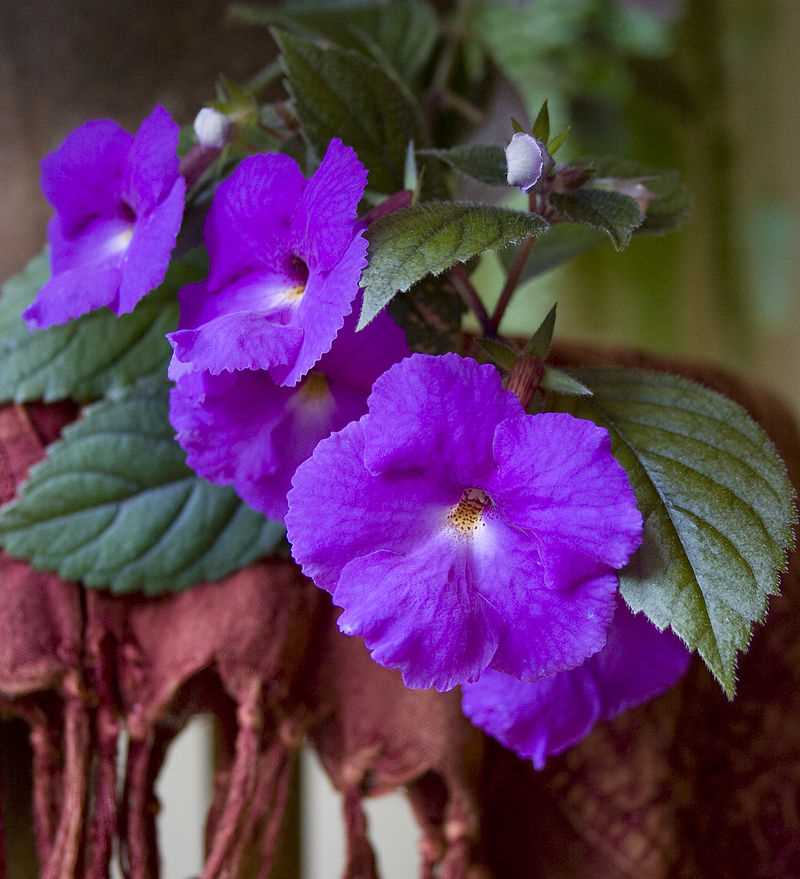
- Light: Achimenes plants prefer bright, indirect light. Place them near a window with filtered sunlight to provide the ideal light conditions.
- Temperature: These plants thrive in temperatures between 65-75°F (18-24°C). Keep them away from cold drafts or extreme heat.
- Watering: Achimenes enjoy regular watering. Keep the soil moist but not soggy. It’s best to water them from the bottom by placing their pot in a shallow tray filled with water and allowing the plant to soak up the moisture. Avoid getting water on the leaves as it can cause them to rot.
- Humidity: Achimenes appreciate moderate humidity. Mist the leaves with water occasionally or place a tray filled with water near the plant to increase humidity.
- Fertilizer: Feed Achimenes plants with a balanced, water-soluble fertilizer once a month during the growing season. Dilute the fertilizer to half strength to prevent over-fertilization.
- Pruning: Prune Achimenes plants regularly to maintain their shape and encourage bushier growth. Cut off any dead or yellowing leaves and pinch back the stems to promote branching.
- Potting: Achimenes can be grown in small pots or hanging baskets. Use a well-draining potting mix that retains moisture but doesn’t become waterlogged. Repot the plants every couple of years to refresh the soil and provide room for growth.
- Propagation: Achimenes can be propagated through division or from leaf cuttings. Divide the plants during repotting by separating the rhizomes, ensuring each division has healthy roots and shoots. To propagate from leaf cuttings, take a healthy leaf and place it in a container with moist soil or water until roots and shoots develop.
- Pest and disease control: Watch out for common houseplant pests such as aphids, spider mites, and mealybugs. Regularly inspect the plants for signs of infestation and treat them with an appropriate insecticide or horticultural soap if necessary.
Choosing the Right Location for Your Achimenes Plants
When it comes to growing Achimenes plants, choosing the right location is crucial for their overall health and growth. Achimenes are tropical plants that thrive in warm and humid environments. Here are some tips to help you find the perfect location for your Achimenes plants.
1. Light Requirements
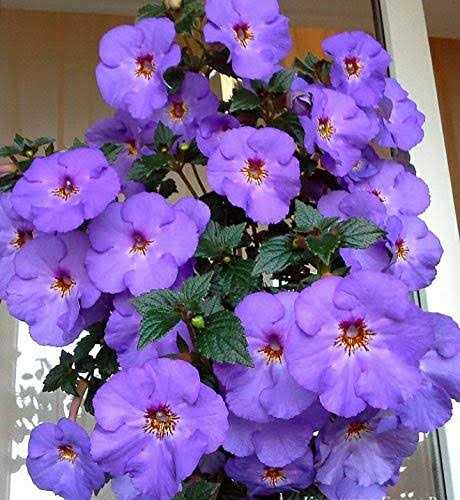
Achimenes plants prefer bright but indirect light. They should not be exposed to direct sunlight, as it can scorch their delicate leaves. Look for a location that offers bright, filtered light or partial shade. East or west-facing windows are usually ideal for Achimenes plants.
2. Temperature
These tropical plants prefer temperatures between 65°F and 75°F (18°C and 24°C). Avoid placing them in areas with extreme temperature fluctuations or drafts, such as near air conditioning units or heating vents. Keep them away from cold drafts during the winter months.
3. Humidity
Achimenes plants thrive in high humidity levels. You can increase humidity around your plants by placing them on a tray filled with water and pebbles or by using a humidifier. Mist them regularly with water to keep their leaves moist and increase humidity.
4. Air Circulation
While Achimenes plants enjoy humid environments, it’s important to provide them with good air circulation. Stagnant air can lead to the development of fungal diseases. Avoid placing them in tightly closed spaces and ensure there is some airflow in the room or area where they are located.
5. Potting Mix and Drainage
Choose a well-draining potting mix for your Achimenes plants. They prefer soil that retains some moisture but also allows excess water to drain freely. Be sure to provide drainage holes in the pots to prevent waterlogged roots, which can lead to root rot.
6. Indoor vs. Outdoor Placement
Achimenes plants can be grown both indoors and outdoors, depending on your climate. If you live in a region with mild winters and warm summers, you can place your Achimenes plants outdoors during the summer months. However, ensure they are protected from direct sunlight and strong winds.
| Light | Temperature | Humidity | Air Circulation | Drainage | Indoor vs. Outdoor Placement |
|---|---|---|---|---|---|
| Bright, indirect light | 65°F – 75°F (18°C – 24°C) | High humidity | Good air circulation | Well-draining potting mix | Depends on climate |
By considering these factors, you can provide your Achimenes plants with the optimal conditions for their growth and ensure they thrive in your home or garden.
Achimenes Watering: Finding the Perfect Balance
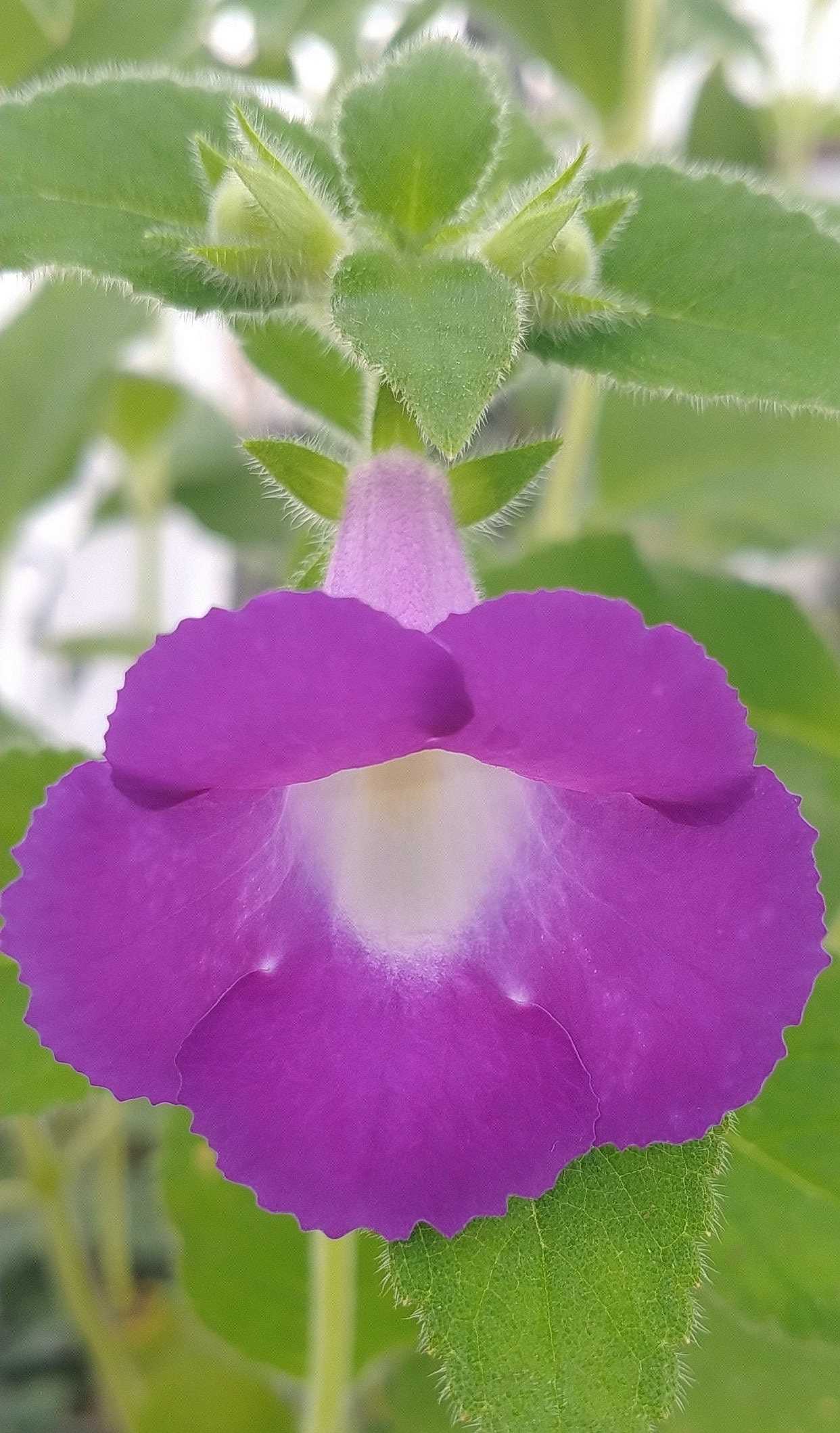
Proper watering is crucial for the health and vitality of your Achimenes plants. Finding the perfect balance between under watering and over watering can be a bit challenging, but with a little practice and observation, you can easily master it.
1. Understanding Achimenes Watering Needs
Achimenes plants prefer consistently moist but well-draining soil. This means you should aim to keep the soil evenly moist, but not soggy. Overly wet conditions can lead to root rot and other fungal diseases, while allowing the soil to dry out completely can cause stress and damage to the plant.
Keep in mind that different factors like temperature, humidity, and pot size can affect the watering needs of your Achimenes. So, it’s important to monitor the soil moisture regularly and adjust your watering schedule accordingly.
2. Watering Frequency
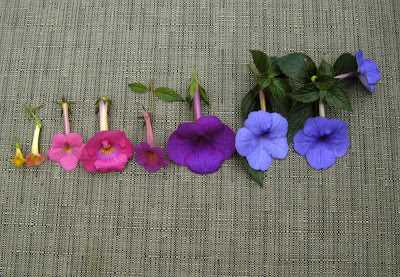
As a general rule, you should water your Achimenes when the top inch of the soil feels slightly dry to the touch. It’s important to avoid letting the soil become bone dry between waterings as this can cause the plant to go into shock and lead to wilting.
However, overwatering can be equally harmful to your Achimenes. If you notice that the soil is still damp or moist when it’s time to water again, it’s best to hold back and let the soil dry out a bit before watering.
3. Watering Techniques
When watering your Achimenes, it’s best to use room temperature water to avoid shocking the plant. Slowly pour water around the base of the plant until it begins to drain out of the bottom of the pot. This ensures that the water reaches the roots and provides thorough hydration.
It’s also a good idea to use a watering can or a watering rose attachment to gently water the soil surface and prevent damage to the delicate foliage. Avoid getting water onto the leaves as this can lead to fungal diseases.
4. Adjusting Watering in Different Seasons
During the growing season, which is typically spring to fall, your Achimenes may require more frequent watering due to increased sunlight and higher temperatures. Monitor the soil moisture regularly and adjust your watering schedule accordingly to prevent the soil from drying out.
In winter, when the plant goes through a period of dormancy, you should reduce the frequency of watering. This helps to prevent waterlogged soil and allows the plant to rest.
Remember, finding the perfect watering balance for your Achimenes may require some trial and error. Pay close attention to the plant’s overall health, growth, and soil moisture levels to make adjustments as needed. With time, you’ll develop a watering routine that works best for your specific Achimenes plants.
Achimenes Soil: A Key Element for Thriving Plants
Choosing the right soil is essential for the successful growth of Achimenes plants. These delicate and beautiful flowers require a well-draining soil mix that provides them with the right balance of nutrients and moisture. Here are some guidelines for creating the perfect soil mix for your Achimenes plants:
- Well-Draining: Achimenes plants prefer soil that is light and well-draining. This helps prevent waterlogged roots and allows oxygen to reach the roots, promoting healthy growth.
- Loamy Texture: The ideal soil for Achimenes plants should have a loamy texture, which means it should contain a balanced amount of sand, silt, and clay. This texture provides good drainage while retaining enough moisture for the plants.
- Organic Matter: Adding organic matter to the soil mix is beneficial for Achimenes plants. Organic matter improves soil structure, enhances moisture retention, and provides essential nutrients for the plants.
- pH Level: Achimenes plants prefer a slightly acidic to neutral pH level. Aim for a pH range of 5.5 to 7.0 for optimal growth.
- Commercial Potting Mix: You can use a commercial potting mix as a base for your Achimenes soil mix. Look for a mix labeled for use with flowering plants or African violets, as these tend to be suitable for Achimenes plants.
Here is a simple recipe for a DIY Achimenes soil mix:
- Mix equal parts of peat moss, perlite, and vermiculite in a container.
- Add a small amount of organic matter, such as compost or well-rotted manure, to the mix. This will enrich the soil with nutrients.
- Thoroughly mix all the ingredients until they are well blended.
Before planting your Achimenes plants, be sure to moisten the soil mix and allow any excess water to drain off. This will create an ideal environment for the roots to establish and thrive.
Remember to regularly check the moisture level of the soil and water your plants accordingly. Overwatering can lead to root rot, while underwatering can cause the plants to wilt. Striking a balance between moisture and drainage is crucial for the health and vitality of your Achimenes plants.
By providing your Achimenes plants with the right soil mix, you are setting them up for success. They will reward you with their stunning blooms and lush foliage, adding beauty to your indoor or outdoor garden.
Achimenes Fertilizing: Nourishing Your Plants
Proper fertilizing is an essential part of caring for your Achimenes plants. With the right nutrients, your plants will grow healthy and produce abundant, beautiful flowers. Here are some tips for fertilizing your Achimenes:
1. Choose the Right Fertilizer
When it comes to fertilizing Achimenes, it’s important to choose the right fertilizer. Look for a balanced, water-soluble fertilizer with an N-P-K ratio of 10-10-10 or 20-20-20. This means that the fertilizer contains equal amounts of nitrogen (N), phosphorus (P), and potassium (K).
2. Apply Fertilizer Regularly
Achimenes plants benefit from consistent feeding. During the growing season, which typically starts in spring and lasts until fall, apply fertilizer every two weeks. Dilute the fertilizer according to the package instructions and water your plants with the solution.
3. Water Before Fertilizing
Before applying fertilizer, make sure to water your Achimenes plants thoroughly. This helps prevent root burn and ensures that the nutrients are evenly distributed throughout the root system.
4. Avoid Over-Fertilizing
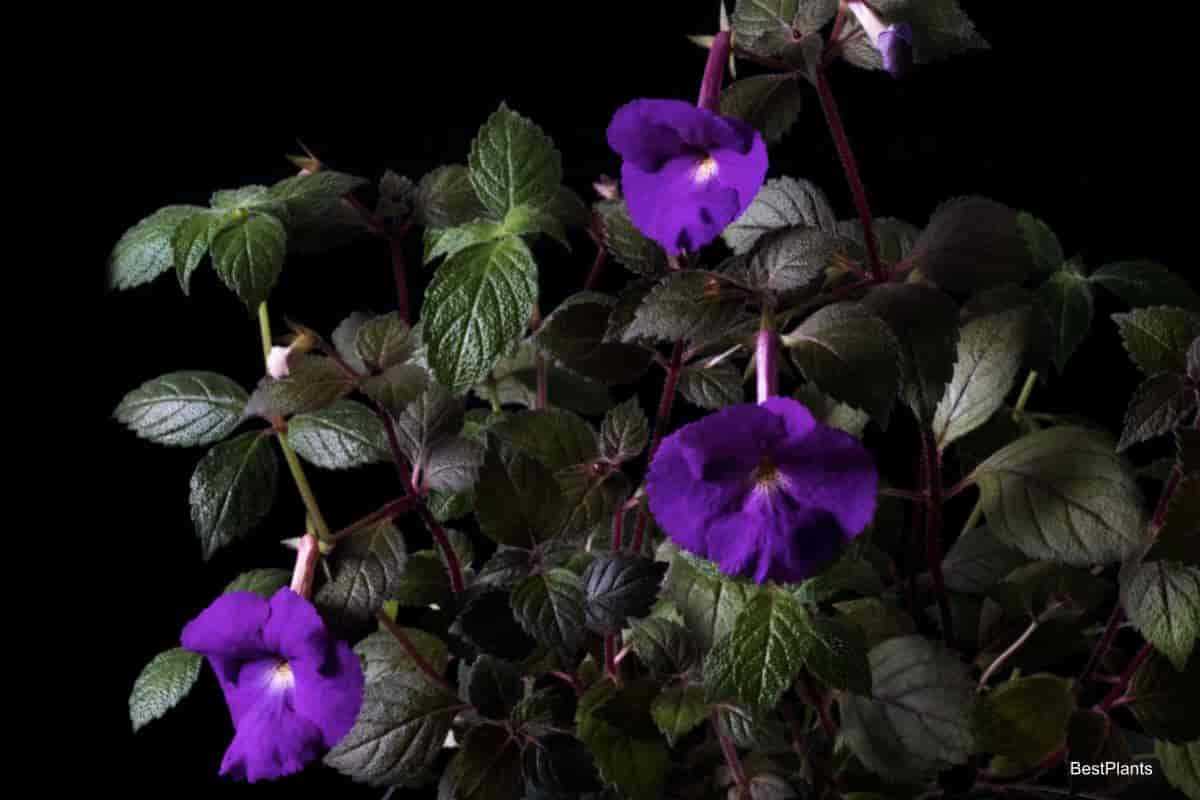
While it’s important to provide your Achimenes plants with nutrients, it’s equally important not to over-fertilize them. Excessive doses of fertilizer can lead to leaf burn and other issues. Always follow the instructions on the fertilizer package and use the recommended amount.
5. Consider Using Organic Fertilizers
If you prefer to use organic fertilizers, there are options available for Achimenes plants as well. Look for organic fertilizers that are specifically formulated for flowering plants. These fertilizers are usually slow-release and provide a gradual and long-lasting supply of nutrients.
6. Monitor Plant Response
Pay attention to how your Achimenes plants respond to the fertilizer. If you notice any signs of over-fertilization, such as yellowing leaves or stunted growth, reduce the amount or frequency of the fertilizer application. On the other hand, if your plants look pale or have weak growth, it may be a sign of nutrient deficiency, and you may need to increase the fertilizer dosage.
By following these fertilizing tips, you can provide your Achimenes plants with the nutrients they need for vigorous growth and stunning blooms.
Propagating Achimenes: Sharing the Beauty
One of the most rewarding aspects of growing Achimenes is propagating and sharing the beauty of these stunning plants. Not only does propagating allow you to expand your collection, but it also gives you the opportunity to brighten someone else’s day by sharing a piece of nature’s artwork.
1. Propagating from Rhizomes
The easiest and most common way to propagate Achimenes is by dividing the rhizomes. Here’s how:
- Wait until the plant goes dormant, usually in late fall or early winter.
- Carefully remove the rhizomes from the soil, making sure not to damage them.
- Divide the rhizomes into smaller sections, each with a few healthy buds.
- Plant the divided rhizomes in pots filled with a well-draining potting mix.
- Keep the pots in a warm and humid environment until new growth appears.
2. Propagating from Stem Cuttings
If you have a particularly beautiful Achimenes plant that you want to share, you can also propagate it from stem cuttings. Here’s how:
- Select a healthy stem from the parent plant and cut it just below a leaf node.
- Remove the lower leaves, leaving only a few at the top.
- Dip the cut end of the stem in rooting hormone to promote faster rooting.
- Plant the stem in a well-draining potting mix, making sure it is firmly planted.
- Place the cutting in a warm and humid environment.
3. Sharing the Beauty
Once your propagated Achimenes plants have established roots and are growing well, it’s time to share their beauty with others. Here are a few ways to do so:
- Give potted Achimenes plants as gifts to friends, family, or fellow gardeners.
- Host a plant swap or plant sale to exchange or sell your propagated plants.
- Donate some of your plants to local schools, community centers, or botanical gardens.
- Share your knowledge and experience by writing articles or giving presentations on Achimenes propagation.
Conclusion
Propagating Achimenes is a wonderful way to spread the beauty of these exquisite plants. Whether you choose to divide the rhizomes or take stem cuttings, the process is relatively simple and rewarding. So don’t keep the beauty to yourself – share it with others and let the magic of Achimenes brighten their lives too.
Achimenes Pest Control: Keeping Your Plants Healthy
Pests can be a major threat to the health and beauty of your Achimenes plants. Taking preventive measures and implementing effective pest control strategies can help you keep your plants healthy and thriving. Here are some tips to help you control pests and preserve the health of your Achimenes:
1. Regularly Inspect Your Plants
Regularly inspect your Achimenes plants for any signs of pest infestation. Look for visible pests such as aphids, mealybugs, spider mites, or whiteflies. Also, be on the lookout for symptoms like yellowing leaves, wilting, or deformed growth, as these could be indicators of pest damage.
2. Remove Infested Plant Parts
If you spot any infested plant parts, such as heavily infested leaves or flowers, remove them immediately. This will help prevent the pests from spreading to other parts of the plant or nearby plants.
3. Control Moisture Levels
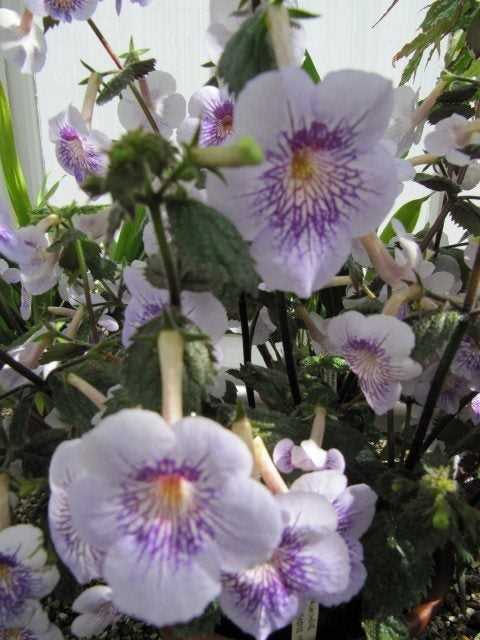
Many pests thrive in moist conditions. Avoid overwatering your Achimenes plants and make sure the soil is well-drained. Also, try to water the plants from the base rather than from the top to minimize excess moisture on the foliage.
4. Use Natural Pest Control Methods
Consider using natural pest control methods such as neem oil or insecticidal soaps. These organic solutions can be effective in eliminating common pests while being less harmful to beneficial insects and the environment.
5. Introduce Beneficial Insects
Some insect predators can help control pest populations in your garden. For example, ladybugs and lacewings are natural predators of aphids and other soft-bodied pests. Consider introducing these beneficial insects to your garden to help keep pest populations in check.
6. Quarantine New Plants
Before introducing new Achimenes plants to your existing collection, it’s a good idea to quarantine them for a period of time. This will allow you to closely monitor the plants for any signs of pests or diseases before they can potentially spread to other plants.
7. Maintain Good Plant Health
Keeping your Achimenes plants healthy and strong is one of the best ways to prevent pest infestations. Provide them with the right amount of light, water, and nutrients, and ensure they are not stressed by extreme environmental conditions. Healthy plants are more resilient and less susceptible to pests and diseases.
8. Seek Professional Help if Needed
If your Achimenes plants are heavily infested or if you are struggling to control the pests on your own, don’t hesitate to seek professional help. A plant care specialist or entomologist can provide expert advice and recommend appropriate pest control methods.
By taking a proactive approach to pest control and implementing these tips, you can help keep your Achimenes plants healthy and free from pests. Enjoy the beauty of your plants and watch them thrive in optimal conditions!
Achimenes Species Information: A World of Variety
Achimenes is a diverse genus of plants that belongs to the family Gesneriaceae. There are over 25 recognized species of Achimenes, each with its own unique characteristics and growth requirements. These plants are native to Central and South America, as well as the Caribbean islands.
Achimenes species display a wide range of flower colors, including shades of pink, purple, blue, red, orange, and white. Some species have solid-colored flowers, while others have patterns or markings on their petals. These vibrant and eye-catching flowers make Achimenes species a popular choice for gardeners and collectors.
The foliage of Achimenes species can also vary, with some plants having bright green leaves, while others have darker or variegated foliage. The leaves are typically soft and fuzzy to the touch, adding to the overall appeal of these plants.
There are several notable species within the Achimenes genus, including:
- Achimenes grandiflora: This species is known for its large, showy flowers that can reach up to 3 inches in diameter. The flowers are typically pink or purple in color and have a tubular shape.
- Achimenes longiflora: This species is characterized by its long, tubular flowers that are usually white or pale pink. It is a trailing plant that is often grown in hanging baskets.
- Achimenes erecta: This species is known for its upright growth habit and large, brightly colored flowers. The flowers can be found in shades of red, orange, yellow, and pink.
When it comes to care, Achimenes species prefer a well-draining soil mix and bright, indirect light. They thrive in warm and humid environments, so it’s important to provide adequate humidity and avoid overwatering. These plants are typically grown from tubers, which should be planted shallowly in pots or containers.
Achimenes species can be propagated through division or by collecting and planting their seeds. With proper care, these plants can reward their caretakers with an abundance of colorful blooms and lush foliage.
| Species | Common Name | Native Range |
|---|---|---|
| Achimenes grandiflora | Large-Flowered Achimenes | Mexico, Central America, and the Caribbean |
| Achimenes longiflora | Long-Flowered Achimenes | Central and South America |
| Achimenes erecta | Erect Achimenes | Central and South America |
Stunning Photos of Achimenes: Capturing Their Beauty
Achimenes is a genus of flowering plants in the family Gesneriaceae, which includes around 50 species. These gorgeous plants are known for their beautiful flowers and vibrant colors, making them a popular choice among gardeners and plant enthusiasts. Here are some stunning photos that capture the beauty of Achimenes:
Achimenes longiflora: This species features large, trumpet-shaped flowers in shades of white and pink. The delicate petals are adorned with intricate patterns, creating a mesmerizing display.
Achimenes grandiflora: With its striking, deep purple flowers, this species is sure to catch your eye. The velvety petals and contrasting yellow center create a dramatic and captivating look.
Achimenes patens: These stunning flowers come in a range of colors, including shades of red, purple, orange, and yellow. The petals are often speckled or striped, adding an extra touch of beauty to the already vibrant blooms.
In addition to their captivating colors, Achimenes flowers also have an intriguing structure. They typically have five petals and a tubular shape, with the stamens and pistil extending beyond the petals. This unique form adds to their allure and makes them a favorite subject for photographers.
To capture the beauty of Achimenes in photographs, it’s important to pay attention to lighting and composition. Natural light often works best, as it brings out the true colors of the flowers. Experiment with different angles and perspectives to find the most flattering angles for your shots.
Whether you’re a professional photographer or just enjoy taking pictures, Achimenes offers endless opportunities for stunning photos. Their vibrant colors and intricate patterns make them a delightful subject to capture and share with others.
Q&A:
Can Achimenes be grown outdoors?
Yes, Achimenes can be grown outdoors in regions with a mild climate. They prefer temperatures between 65-75°F (18-24°C) and partial shade.
How often should I water my Achimenes plant?
Achimenes plants should be watered thoroughly when the top inch of soil feels dry. It is recommended to water them once or twice a week, depending on the temperature and humidity levels.
How do I propagate Achimenes plants?
Achimenes can be propagated by dividing the rhizomes or by taking stem cuttings. Division should be done in early spring when the plant is actively growing. Stem cuttings should be taken from healthy, non-flowering stems and rooted in a well-draining soil mixture.
What kind of soil is best for Achimenes?
Achimenes prefer a well-draining soil mixture that is rich in organic matter. A mixture of equal parts peat moss, perlite, and potting soil is a good option. Avoid using heavy or clay soils as they can lead to root rot.
Do Achimenes plants have any special fertilizer requirements?
Achimenes plants benefit from regular fertilization during the growing season. A balanced, water-soluble fertilizer can be applied every two weeks at half the recommended strength. Be sure to water the plant before and after fertilizing to prevent burn.
Video:
EXTREMELY Rare & Beautiful Achimenes – How To Plant, Grow and Care







